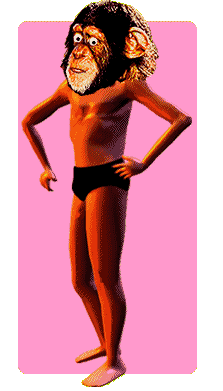
Dr. White likes to cut the heads off small animals and attach them to different bodies. And now he wants to do this to humans in the immediate future. Dr. White calls this head swap procedure a "full body transplant," following his philosophy that a person's identity is in the head, not the dangling stuff attached to it below the neck. He believes his first patients will be people with high-level spinal cord injuries, like Superman actor Christopher Reeve.
A devout Catholic, and member of the Vatican's Pontifical Academy of Sciences, Dr. Robert White is Professor of Neurosurgery at Case Western Reserve University and one of the world's leading neurologists. He's virulently pro-life, believing strongly that human embryos have no place in brain tissue experimentation. He's been endowed with the Lifetime Humanitarian Award by the American Association of Neurological Science Surgeons and he's an accomplished popular author, writing heartwarming tales of patients who have been helped by his work.
White proved the practicability of his head roulette technique on advanced mammals back in 1973 when he cut the head off a lab monkey and attached it to another monkey's still-warm body. The resulting Frankenmonk could see and hear, breathe and eat on its own. Unfortunately, Frankenmonk was also paralyzed from the neck down, the problem being that it was been nearly impossible to connect the body's spinal cord to the new head.
Twenty-five years later, human transcorporeal patients will still suffer the same fate. As with any damaged part of the body, a cut or crushed spinal cord releases a variety of chemicals designed to limit the extent of the injury. The damaged nerves grow the equivalent of scar tissue around themselves, and as with any scar, the result is permanent.
While attaching a new body to a quadriplegic's non-working spinal column -- essentially trading one paralyzed body for another -- seems about as useful as giving Madeleine Albright a Mary Kay makeover, White maintains that it is the right thing to do. Quadriplegics generally die from multiple organ failure, as the body's feedback mechanisms fail to detect minor internal damage over the years. Giving a quad a new set of organs in one package could substantially increase their lifespan, if not their quality of life.
That's why White is in negotiations with neurosurgical colleagues in Ukraine -- chosen for its first-class neurology work and its relative media isolation -- to perform the first human body transplant next year. Conveniently, Ukraine also suffers from a lack of medical ethics review boards.
Reeve, meanwhile, has established a foundation to fund more prosaic paralysis research. Dr. John McDonald, working with Reeve's foundation, has developed drugs that may actually grow new spinal cord tissue. McDonald's work, which he admits would have been "science fiction only a decade ago" might one day enable quadriplegics to use Dr. White's transplant technique to get a head in life.
Patrick Di Justo longs to have an asteroid named after him.
